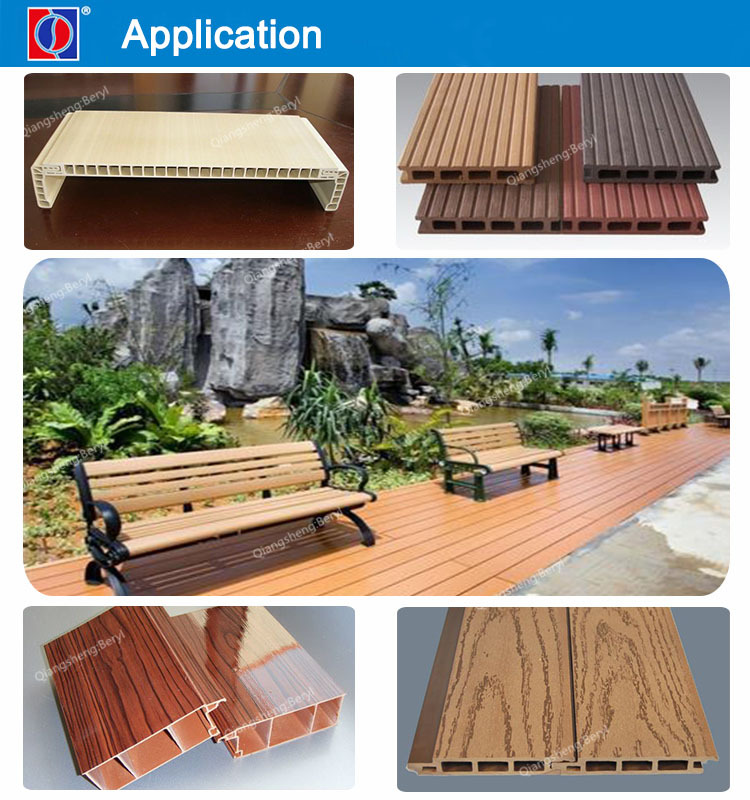
Why Modified Rice Straw/PP WPC Are the Ideal Choice for Outdoor Furniture?
October 3, 2023
Elevate Your Outdoor Space with KysimWPC’s Innovative Invisible Gap Decking
October 9, 2023”
Choosing Between Capped Composite and Vinyl Decking? Let’s Break It Down

If you’re like me and tired of constant deck maintenance, you’ve probably stumbled upon two superhero materials: capped composite decking and capped vinyl decking. These modern solutions are like the self-cleaning ovens of outdoor living – they handle weather tantrums, resist stains like a pro, and only ask for an occasional hose-down. But man, choosing between them can feel like picking between chocolate and vanilla ice cream – both good options, just different!
What Makes Them Tick?
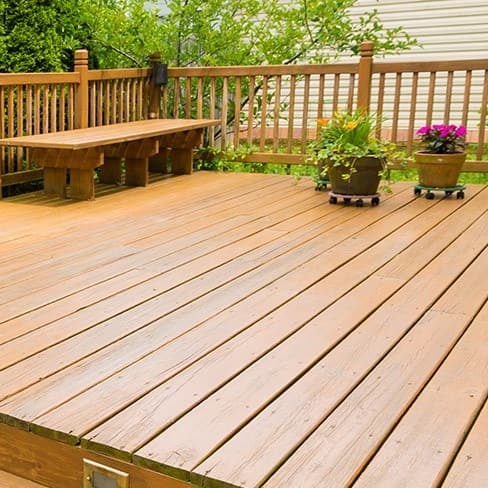
Let’s start with the composite option – imagine recycled milk jugs and wood scraps getting a superhero makeover with a plastic armor coating. This stuff’s got enough recycled content to make Mother Nature smile, and that protective shell? It’s like sunscreen for your deck. I helped install some last summer at my cousin’s place, and let me tell you, it handled that heatwave like a champ.
Now vinyl decking is the smooth operator – 100% plastic through and through. No wood fibers means it laughs at moisture. Perfect around pools, though I will say it can get a bit toasty under bare feet at high noon. Found that out the hard way during a backyard barbecue!
The Feel Test
Here’s where things get interesting. Run your hand over composite decking and you’ll swear it’s real wood – that’s the magic of those wood fibers. Vinyl? It’s got that sleek, modern feel that some love and others find a bit… well, plasticky. Remember helping my neighbor choose? We spent 20 minutes just rubbing samples like weirdos before she decided!
Longevity Showdown
Both promise decades of service, but through different approaches. Composite uses its wood-plastic combo like a reinforced concrete mix, while vinyl relies on pure plastic durability. The team at Plastory shared some great insights about material science that really helped me understand why both options last so long.
At the end of the day, I lean toward composite – it’s got that natural wood charm without the upkeep nightmares. But hey, your perfect deck might be different! What matters most – is it comfortable underfoot? Does it make you want to host those summer BBQs? Get some samples, walk on them barefoot, spill some lemonade – that’s the real test!
Let me tell you why I’ve become such a fan of capped composite decking. Picture this – it’s basically the superhero of outdoor flooring, combining recycled plastic bottles and wood scraps into something truly special. The magic happens with that protective PVC armor they fuse onto the surface. I’ve seen how this shield works wonders against brutal sun exposure and crazy weather swings, almost like giving your deck its own climate-controlled jacket.
 What really blows my mind is how eco-conscious this stuff is. We’re talking about materials that would normally clog up landfills getting reborn as beautiful deck boards. While exact numbers vary between brands, most manufacturers claim you can recycle the bulk of these boards when they eventually wear out – we’re in the ballpark of 60-95% recyclability here. That’s like giving Mother Nature a high-five every time you choose this material!
What really blows my mind is how eco-conscious this stuff is. We’re talking about materials that would normally clog up landfills getting reborn as beautiful deck boards. While exact numbers vary between brands, most manufacturers claim you can recycle the bulk of these boards when they eventually wear out – we’re in the ballpark of 60-95% recyclability here. That’s like giving Mother Nature a high-five every time you choose this material!
Now don’t just take my word for it – the team at Plastory has some great insights on polymer durability that align with what I’ve observed. The PVC cap isn’t just for show either. It creates this nearly impervious barrier against mold, stains, and those pesky fading issues that plague traditional wood decks. Ever tried removing red wine stains from regular decking? With this capped version, a quick rinse is all you need.
 What surprises most people (myself included initially) is how natural it feels underfoot. The wood fibers give it just enough texture and warmth that you might forget you’re walking on recycled materials. And get this – some versions even weather to a nice patina over time, similar to aged teak but without any of the maintenance headaches.
What surprises most people (myself included initially) is how natural it feels underfoot. The wood fibers give it just enough texture and warmth that you might forget you’re walking on recycled materials. And get this – some versions even weather to a nice patina over time, similar to aged teak but without any of the maintenance headaches.
If you’re still on the fence about decking materials, consider this: capped composite gives you that classic wood look without the annual sanding/staining ritual. Plus, you’re keeping tons of plastic waste out of our oceans and landfills. Not too shabby for something that’s essentially a fancy recycled floor, right?
Let me tell you what I’ve learned about capped vinyl decking through helping homeowners choose materials. This stuff is like the superhero of PVC products – 100% synthetic through and through, no wood pulp hiding in the mix. While my neighbor’s composite deck warps slightly with seasons, his vinyl cousin stays remarkably consistent in color and texture. The plastic construction makes it practically bulletproof against fading, scratches, and those embarrassing BBQ sauce stains we’ve all experienced.
But here’s the catch – vinyl can be a bit of a drama queen with temperature swings. During last summer’s heatwave, I measured surface temperatures nearly 20% higher than composite alternatives. It’s like walking on a warm beach towel – not uncomfortable, but noticeable. The material expands and contracts more than wood-blend decks, something I always mention to clients in extreme climates.

What really surprises people? The maintenance (or lack thereof). Unlike my old wood deck that needed yearly TLC, a quick hose-down keeps vinyl looking factory-fresh. I’ve seen 10-year-old installations that still pass for new – the color retention is that good. Just remember to leave proper expansion gaps during installation, unless you want wavy boards come winter!
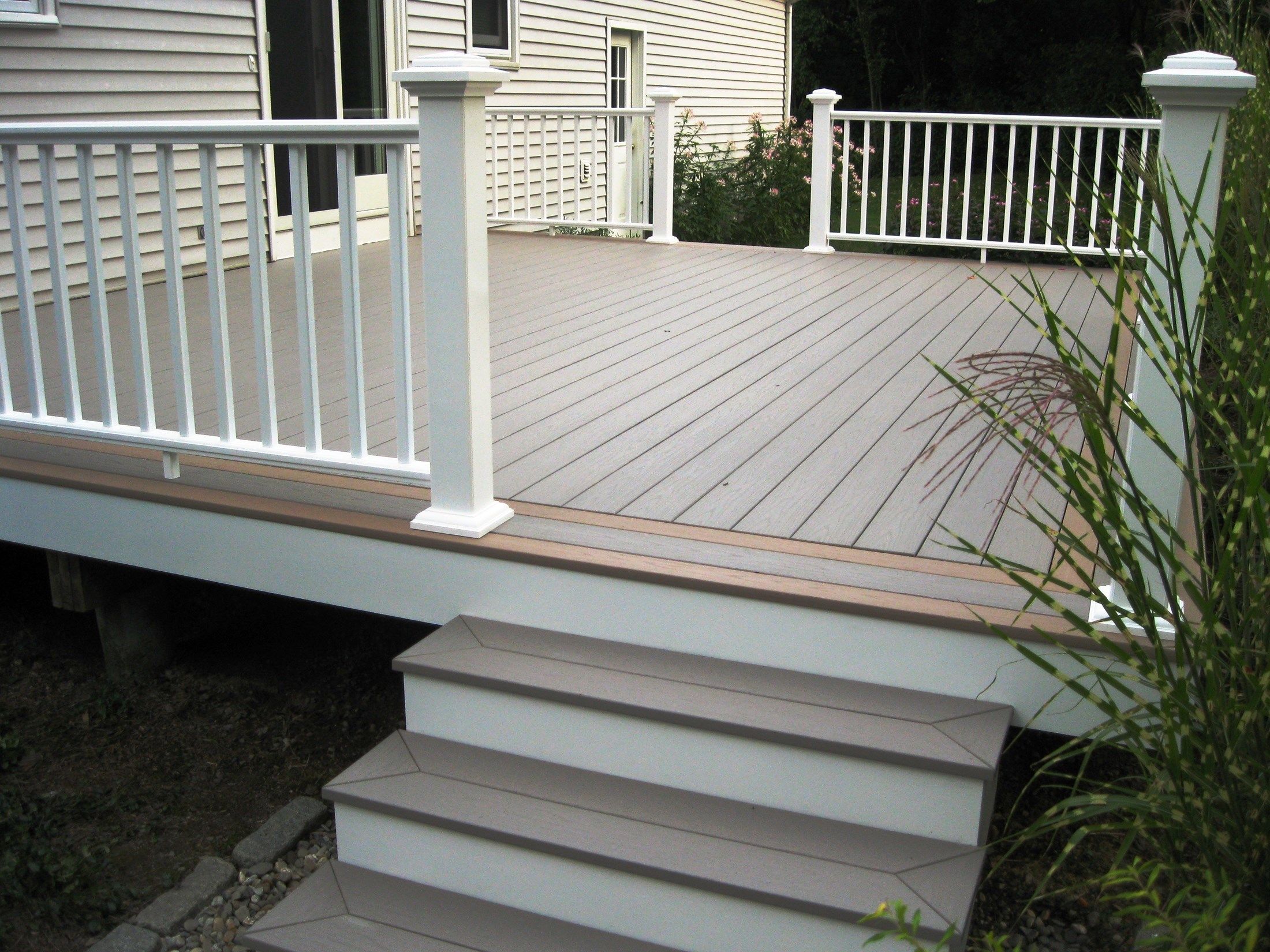
For pet owners or families with kids, it’s a dream surface. No splinters, no oil absorption from tricycle wheels, and cleaning up after Fido? A breeze. But if you’re after that authentic wood feel underfoot, you might find vinyl a tad too ‘perfect’ – it lacks the subtle grain variations that make composite decking feel more organic.
When it comes to outdoor surfaces that look great year-round, both capped composite and vinyl decking deliver the goods. But let me tell you, there’s a huge difference in how they actually feel underfoot. I’ve walked barefoot on both types during summer afternoons, and here’s the real tea – capped composite decking genuinely tricks your feet into thinking it’s real timber!
Why Composite Wins the Texture Game
That wood-like magic comes from its secret ingredient: actual wood fibers mixed right into the material. Picture this –  when manufacturers blend recycled wood dust with polymers, they create a surface that’s got that slightly grainy, organic texture we all love in natural wood. It’s like the decking version of those convincing artificial plants – looks and feels authentic!
when manufacturers blend recycled wood dust with polymers, they create a surface that’s got that slightly grainy, organic texture we all love in natural wood. It’s like the decking version of those convincing artificial plants – looks and feels authentic!
Vinyl decking? Don’t get me wrong – it’s sleek and modern. But here’s the catch: 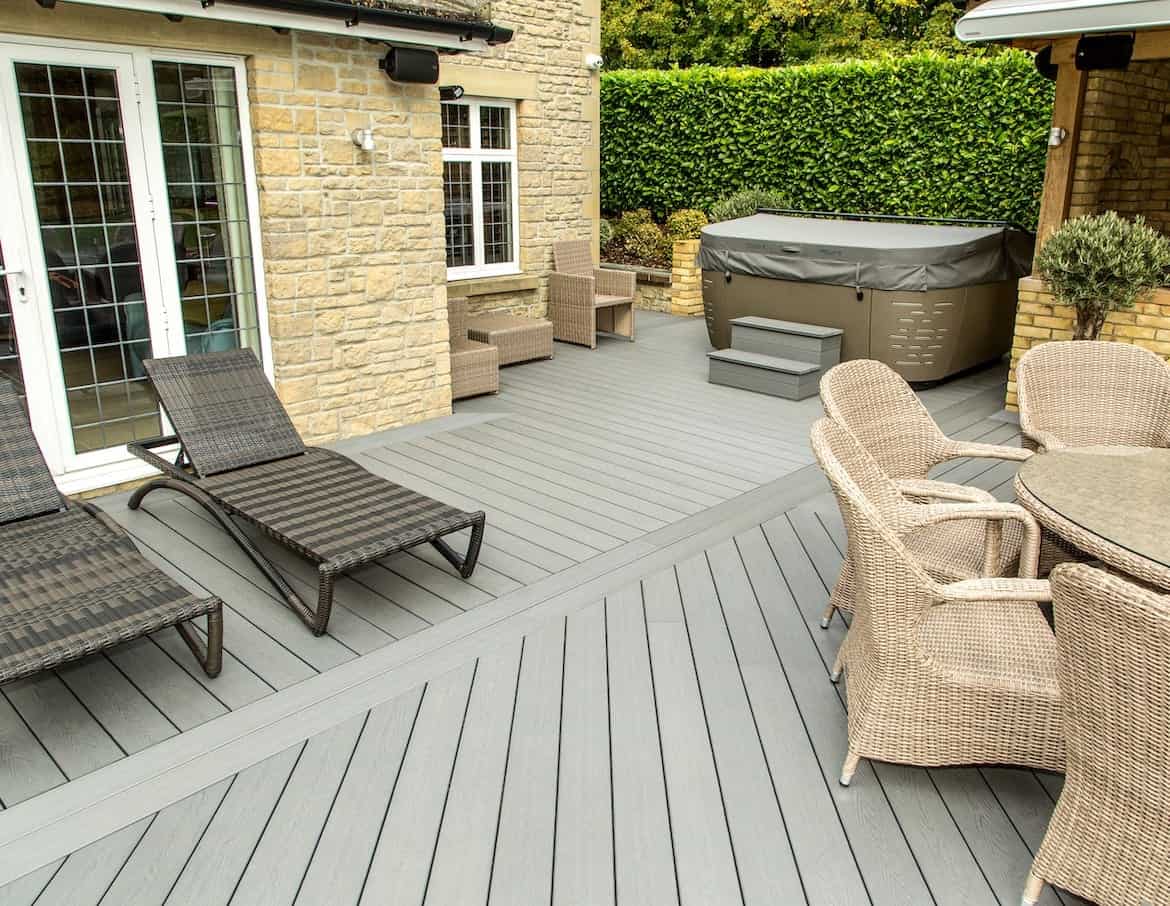 that smooth plastic surface can feel a bit… well, plasticky. I’ve noticed it gets especially slippery when wet – something to think about if you’ve got kids running around or plan to install near a pool area.
that smooth plastic surface can feel a bit… well, plasticky. I’ve noticed it gets especially slippery when wet – something to think about if you’ve got kids running around or plan to install near a pool area.
The Warmth Factor You Can’t Fake
Here’s something most guides don’t mention: composite decking actually warms up differently in sunlight. Unlike vinyl that can feel like walking on hot car hoods, the wood particles in composite help moderate temperatures. It’s still not exactly cool, but definitely more bearable for bare feet – trust me, I’ve done the patio dance test!
Want to dive deeper into material science? Check out this interesting breakdown on how different decking materials handle heat retention.
At the end of the day, if you’re craving that authentic wooden deck experience without the maintenance headaches, capped composite is your best bet. But hey, if ultra-modern aesthetics are your priority, vinyl’s got its charm too. What matters most – looks that wow guests, or feel that satisfies your inner nature lover?
Let me tell you what I’ve learned after helping dozens of homeowners choose their decking – both capped composite and vinyl options are like the marathon runners of outdoor materials. They’ll easily go the distance for around 25 years, laughing off everything from spilled red wine to muddy paw prints. I’ve seen these materials stand up to scorching summer heatwaves and winter freezes that would make regular wood warp like crazy.
Here’s the kicker though – while they both score top marks for durability, they achieve it differently. The composite version combines recycled wood fibers with plastic, kind of like a superhero team-up, while vinyl goes all-in on synthetic strength. Want proof? Check out how these materials hold up over time in  and
and  .
.
From what I’ve observed, the secret sauce is in their protective caps. It’s like they’re wearing an invisible shield against UV rays and moisture. Remember that client who installed composite decking back in 2010? It still looks fresh as daisies – and yes, they actually have kids and three hyperactive dogs! If you’re curious about maintenance tips that help extend this lifespan, Plastory’s guide has some handy real-world advice.
Now, here’s something most salespeople won’t tell you – while the 25-year promise sounds great, actual performance depends on installation quality. I always recommend professional installation, especially for vinyl which can be trickier in extreme temperature swings. But get this right, and you’re looking at decking that’ll outlast your patio furniture… twice over!
Let me tell you why I’m team composite when it comes to decking. After helping neighbors choose materials for their patio makeovers and seeing different options weather over time, capped composite decking consistently comes out on top. Picture this – you get that satisfying knock-knock sound of real wood when walking barefoot, but without the annual sanding nightmares. The secret sauce? That protective plastic shell hugging wood fibers like a raincoat, making it laugh at spilled wine or paw prints.

Here’s the kicker – while vinyl decking might win in scratch resistance, composite actually feels like timber underfoot. I’ve had clients do double-takes when I tell them it’s not real wood! The thermal performance surprised me too. On that 35°C scorcher last summer, my composite deck stayed cool enough for flip-flops while the neighbor’s vinyl became a foot fryer.
Now about longevity – both promise decades of use, but composite’s color retention blows my mind. The UV-protected surface keeps hues truer than my favorite faded band t-shirt. Eco-wise, it’s not perfect but using recycled materials gives me that warm fuzzy feeling. Check out Plastory’s breakdown of sustainable decking options if you’re into green solutions.
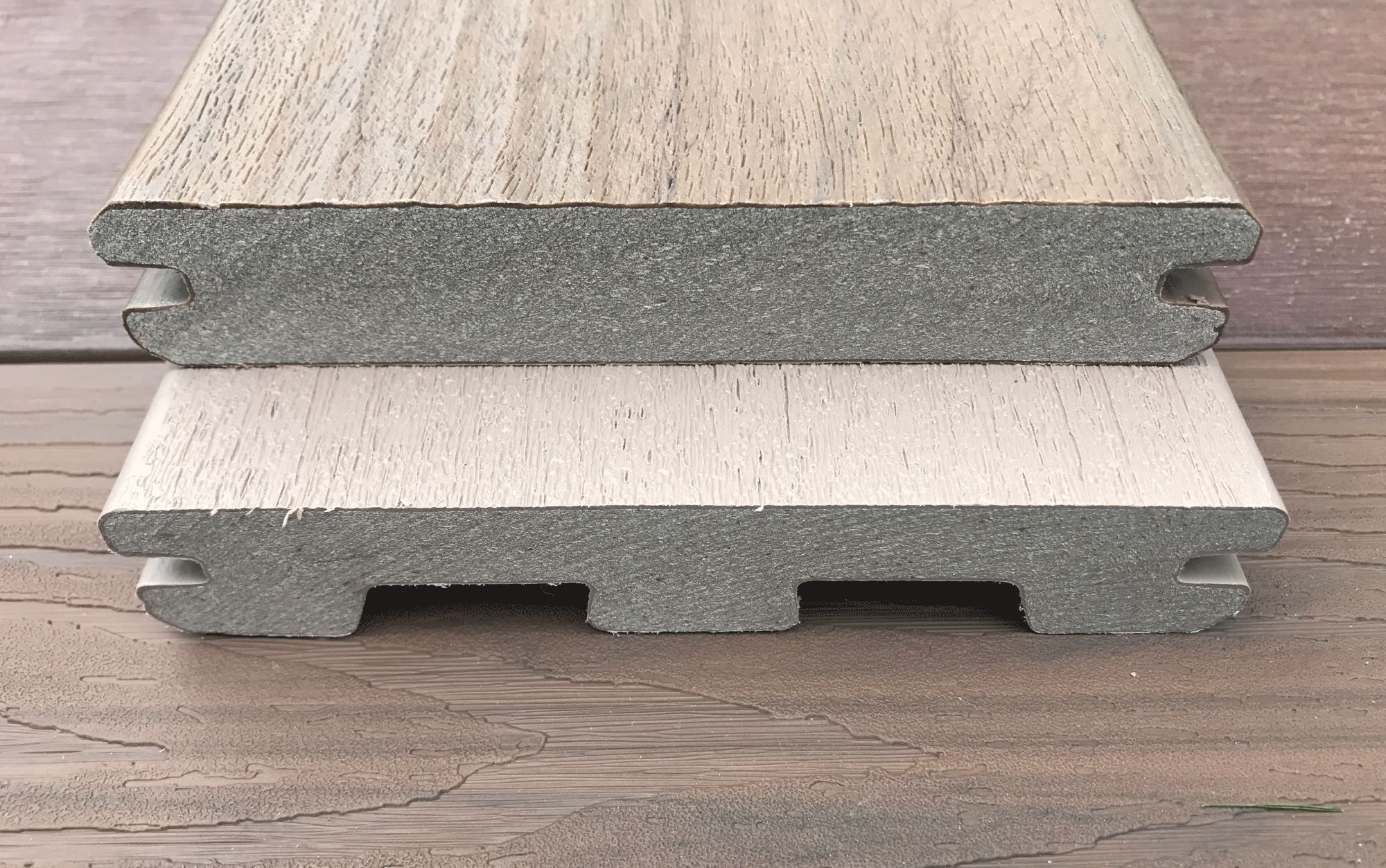
Budget talk time! While upfront costs might make you blink, factor in zero staining/sealing costs. My brother’s been using the same composite deck for 12 years without any special treatments – just occasional soapy water washes. Compare that to wood decking’s never-ending maintenance costs!
At the end of the day, your choice boils down to priorities. Want bulletproof low maintenance? Vinyl’s your guy. Craving that authentic wood vibe without the upkeep? Composite’s calling your name. Personally, I’ll take the material that ages like fine wine while keeping my weekends maintenance-free. What’s your decking dealbreaker – texture, temperature, or total cost of ownership?
